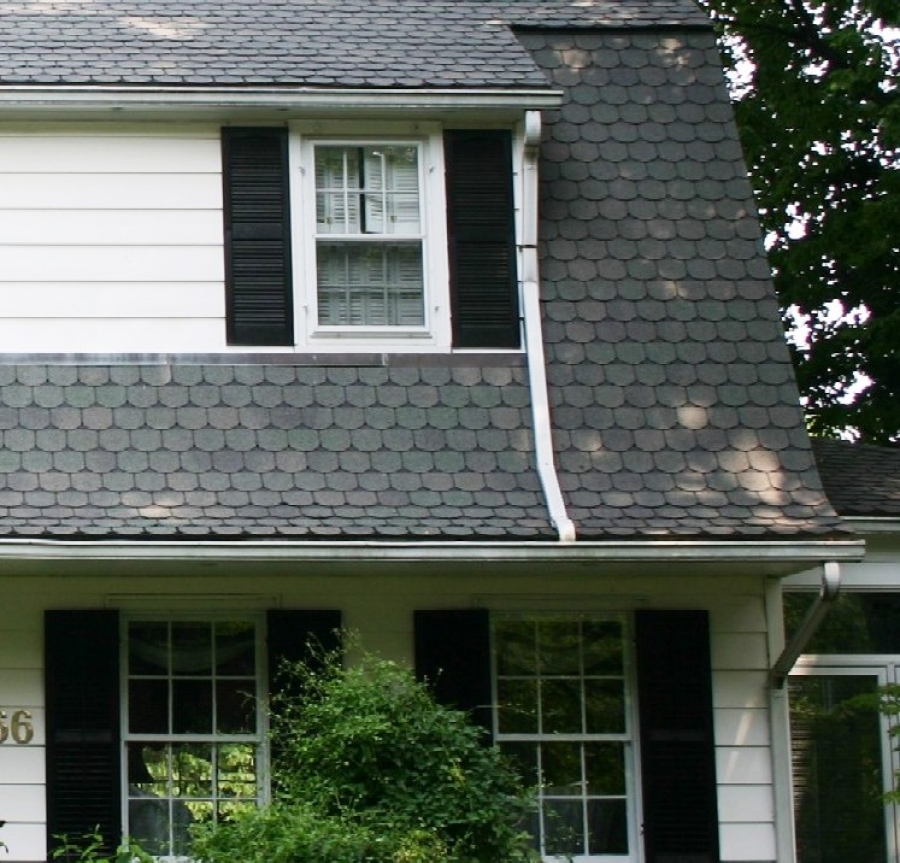Manufactured Gutters and Downspouts
Gutters and downspouts are an important part of any roof drainage system, used to control rainwater runoff. Gutters and downspouts protect a structure from serious damage, as moisture in the roof, walls and foundation of a building can lead to many problems, including mold and mildew issues. The gutter is the horizontal component designed to collect and channel rainwater away from the roof, directing it to the downspouts. The downspout is the vertical pipe used for carrying the collected rainwater away from the structure. The outlet of the downspout can terminate above or below ground. In above ground terminations, splash blocks are often used to direct rainwater away from the foundation of the building. Many buildings and sites utilize a network of underground piping which connects the downspouts to a city or municipal underground storm system.

Topic Summary
The history of the gutter can be traced back as early as AD 47, when the Romans knew the importance of water management. Roman mythology even had a goddess of sewers, Cloacina. By the 9th century in Europe, large cathedrals began employing gutters and gargoyles were used to throw collected rain water away from the building facades. Lead was a readily available metal and it was the predominant material used for gutters and downspouts. There is evidence to suggest that by the 18th century, wooden gutters were constructed in the United States by fastening two lengths of boards in a V-shape. By the 19th century, cast iron began to replace lead for rainwater control. Then by the early 1940’s, the low cost of plastics caused them to become more commonly used than cast iron. By the 20th century, hanging gutters were available in terne (a mix of lead and tin used to cover and protect steel), copper, galvanized iron, galvanized steel, monel (a proprietary blend of nickel, copper and iron), aluminum, and even vinyl. Today the most commonly used metal for gutters and downspouts is aluminum. Other materials used for gutters and downspouts include copper and zinc-coated steel (galvanized), also available with a prefinished coating.
The size of the gutters and downspouts depends upon many variables, such as: the roof pitch, the roofing material, the size of the roof, the shape of the gutter, and the building's geographic location (which will determine the rain fall intensity). Rain fall intensity is based on the U.S. Weather Bureau records and is expressed in inches per hour for a five minute duration. Building and plumbing codes provide the charts and graphs necessary to safely size gutters and downspouts, and to determine the quantity of downspouts.
Both very low sloped roofs and “green" roofs with vegetation will collect and keep water for a longer period of time before it flows into the gutter. Therefore, the amount of water that the downspout has to handle in these situations is much less. Conversely, the amount of rainwater runoff from a steep pitched roof will be considerably more. That is to say, what rain does fall on this roof will transfer almost immediately into the gutters. The most efficient gutter profile is the half-round. The round shape makes it ideal for moving rainwater with the least amount of resistance.
The SMACNA (Sheet Metal and Air Conditioning Contractors National Association) "Architectural Sheet Metal Manual" is the industry standard that specifies and recommends gutter lengths and widths, the gauge of metal used, and the number of downspouts per square-foot of drainage area. Standard gutter profiles are also defined by SMACNA. Some of the commonly used gutter profiles used are: Style A, Style B, Style F, Style G, Style H, Style I, Style K, Style K with a highback, Half-round single bead, Half-round with a highback, Quarter round, and Ogee. Manufactured corners matching the gutter profile may be necessary. Gutters should be installed with a pitch of 1/16 inch per foot or greater.
Downspouts come in a variety of profiles, as well, including plain round, corrugated round, plain rectangular and rectangular corrugated. Spacing of downspouts should not exceed 40 feet and the cross sectional area of downspouts should not be less than 7.00 square inches. Downspouts need to be securely attached to the building walls. Methods of gutter attachment (support) to the roof edge can be accomplished in a number of ways, using either gutter brackets, straps, or a form of spikes and ferrules. Depending on the size of the gutter supports, these connections may need to occur every 12 to 30 inches on center.

Buildipedia Staff
The Buildipedia research and writing staff consists of dozens of experienced professionals from many sectors of the industry, including architects, designers, contractors, and engineers.
Website: buildipedia.com/


